This White Velvet Batter Bread is a savory bread baked in coffee cans to create a special mushroom shape. The batter, which is beaten, not kneaded, fills the kitchen with a wonderful aroma while its baking.
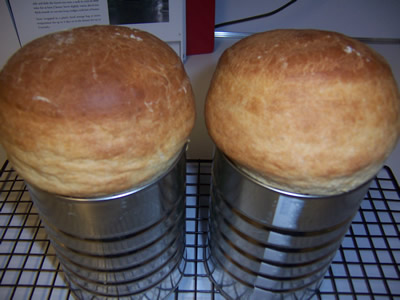
It is an easy yeast bread which is suitable for a beginning baker. However, it’s fun to make regardless of your baking level.
I like this bread because it is quick to make. It can be prepared in 2 hours from mixing to table. If you don’t have time to prepare a kneaded bread, this is a good alternative because it rises once, then bakes.
Batter breads require no kneading so the process is quicker than for regular bread dough and it is easier to clean up — a definite plus. For more information, check out this section on no knead breads.
White Velvet Batter Bread
Slightly adapted from Beth Hensperger’s Bread Made Easy A Baker’s First Bread Book
Special equipment needed: Two 13-ounce coffee cans or two 4 1/2-inch diameter ovenproof glass baking canisters.
Tip on using coffee cans as molds: If the bread sticks in the pan because of the ledge at the top of the coffee cans, cut the bottom off using a can opener and let the bottom fall to the top and rest on the ledge. This way, the bottom becomes the top and vice versa. Now, the bread should come out very easily.
Ingredients:
- 1 tablespoon (1 package) active dry yeast
- 3 tablespoons firmly packed light or dark brown sugar
- 1/4 teaspoon ground ginger
- 1/2 cup warm water (105°F to 115°F
- 1 can (12 ounces) evaporated milk, regular, fat-free, or goat’s milk, undiluted, at room temperature
- 2 teaspoons salt
- 2 tablespoons walnut oil or unsalted butter, melted
- 4 1/4 cups (exact measure) unbleached all-purpose flour
Directions:Step 1: Mixing the Batter
In a small bowl, sprinkle the yeast, a pinch of the brown sugar, and the ginger over the warm water. Stir to dissolve and let stand until foamy, about 10 minutes.
For this recipe I’ve provided the instructions for making the batter by hand. I got a good workout because you have to beat the batter vigorously. If you prefer, you can let your mixer do the work for you.
Combine the milk, the remaining sugar, salt, oil or butter, and 1 1/2 cups of the flour in a large bowl. Beat vigorously with a whisk, at least 40 strokes by hand, until thick and sticky. Add the yeast mixture and beat vigorously for 1 minute more.
Continue to add the remaining flour gradually, 1/2 cup at a time, then beat vigorously another 100 strokes, about 2 minutes. By this time, I had switched to using the Danish dough whisk because the batter was too thick to use the balloon whisk. The batter will stay sticky. Scrape down the sides of the bowl with a spatula.
Step 2: Panning and Rising
Generously grease the bottom and sides of the coffee cans or glass baking canisters. Or, line the cans with greased parchment paper or paper bags. Divide the batter evenly between the 2 molds, filling one-half to two-thirds full.
Use a spatula to push the batter into the corners and smooth the top with flour-dusted fingers. Cover loosely with plastic wrap lightly greased with vegetable oil cooking spray.
Let rise at room temperature until double in bulk, about 45 minutes to 1 hour. The batter should be even with the rim of the pan and slightly lift up the plastic wrap. Do not let the dough rise more than double (over risen loaves collapse during baking).
Tip: If the batter over rises, scrape it into a bowl, beat vigorously about 20 strokes, then return it to the pan and begin the rising process again.
Step 3: Baking, Cooling, and Storage
About 20 minutes before baking, place the oven rack in the lower part of the oven and preheat the oven to 350°F (325°F if using glass molds). Bake until the top is crusty and dark brown, the bread sounds hollow when tapped, and a cake tester inserted into the center comes out clean, 40 to 45 minutes. An instant-read thermometer should read 200°F. The crown will dome about 3 to 4 inches above the rim of the mold. Cool in the molds for 5 minutes.
Turn mold on its side and slide the loaves out onto a rack to cool on their sides for at least 2 hours. Serve slightly warm, sliced into thick rounds or cut into long wedges, with lots of butter. Don’t wait too long to eat the bread after it cools, it is really good!
Storing the bread: Store wrapped in a plastic food storage bag (or bread bag) at room temperature for up to 3 days or in the freezer for up to 2 months.
Happy Baking!
Cathy
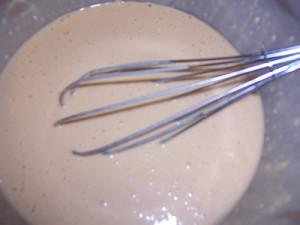
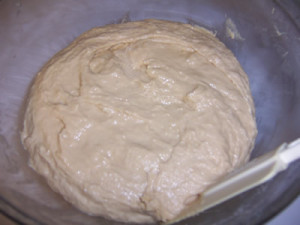
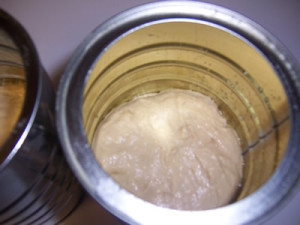
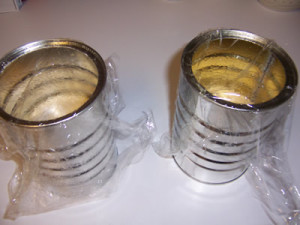
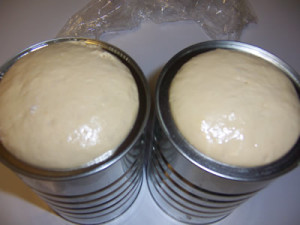
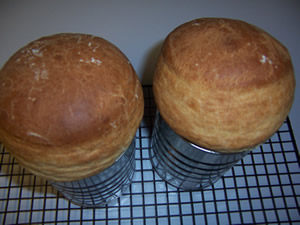
alilduckling says
The only metal coffee cans I have have inside metal rims. Do the inside rims of the coffee can cause a problem with the rising or getting the bread out later?
Cathy says
I had this same problem with my coffee cans. I figured out the solution. Refer to the section “tips on using coffee cans as molds” on this post for my solution: https://www.breadexperience.com/steamed-boston-brown-bread/
alilduckling says
I’m looking forward to trying this out!
alilduckling says
How do you figure the number of servings for this recipe other than as a loaf (loaves)??
Cathy says
It depends on how thinly you slice the loaf.